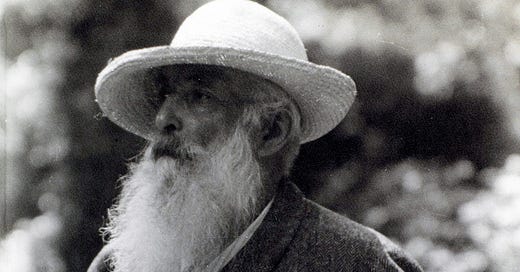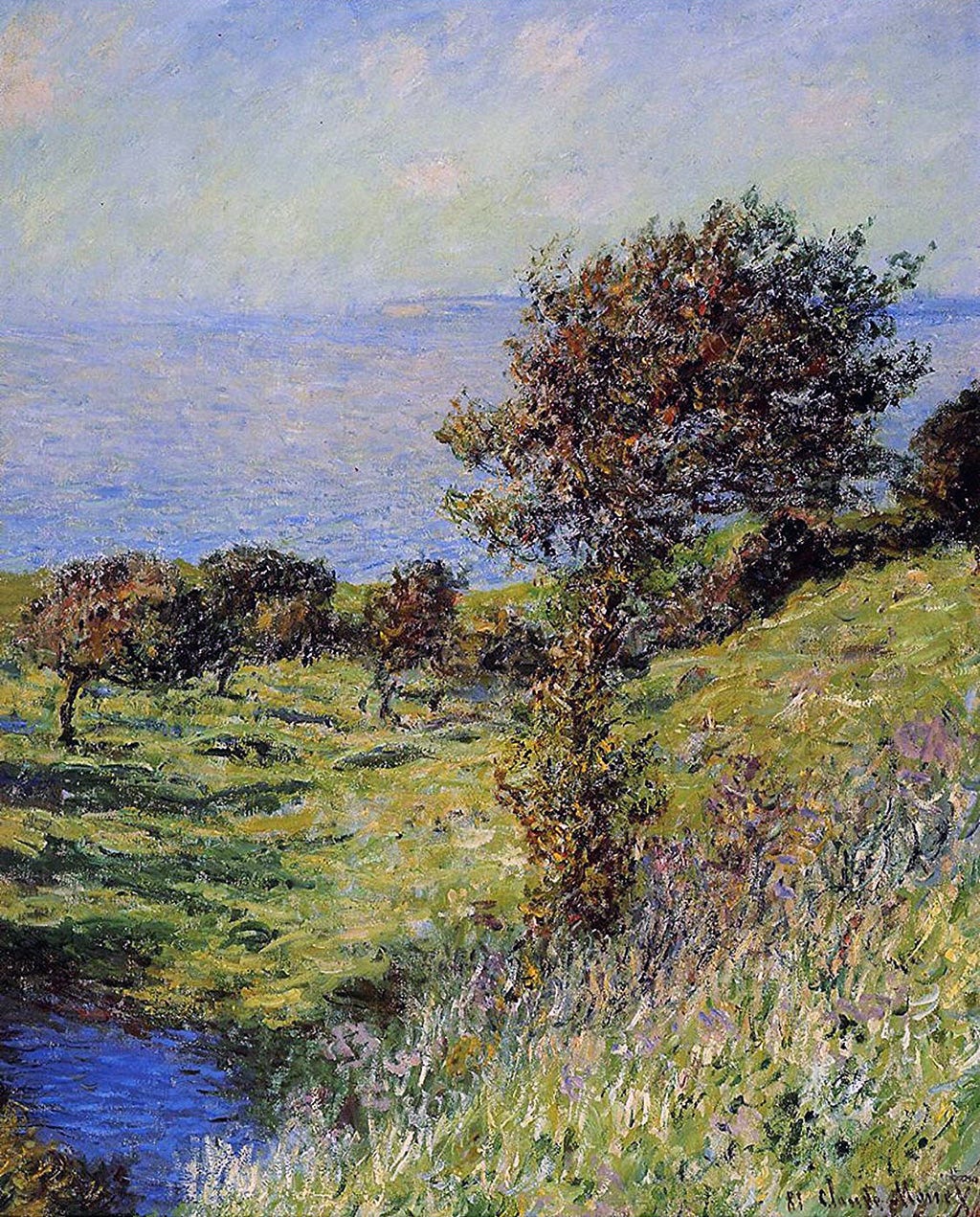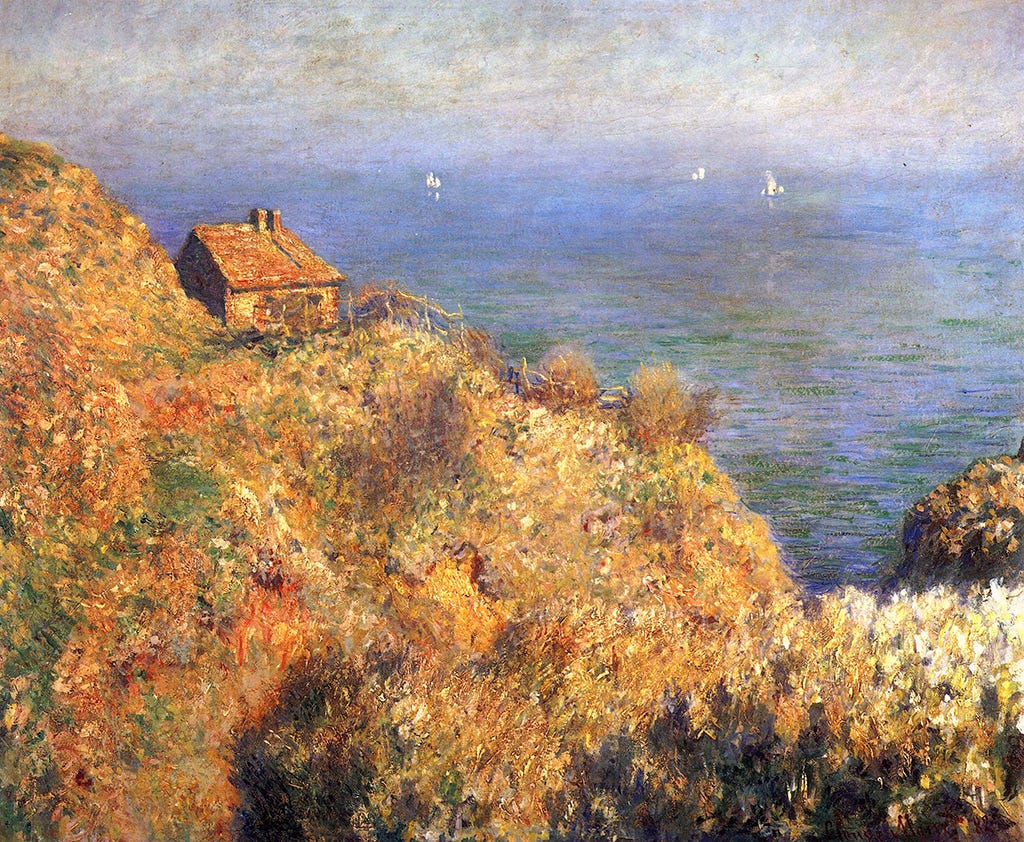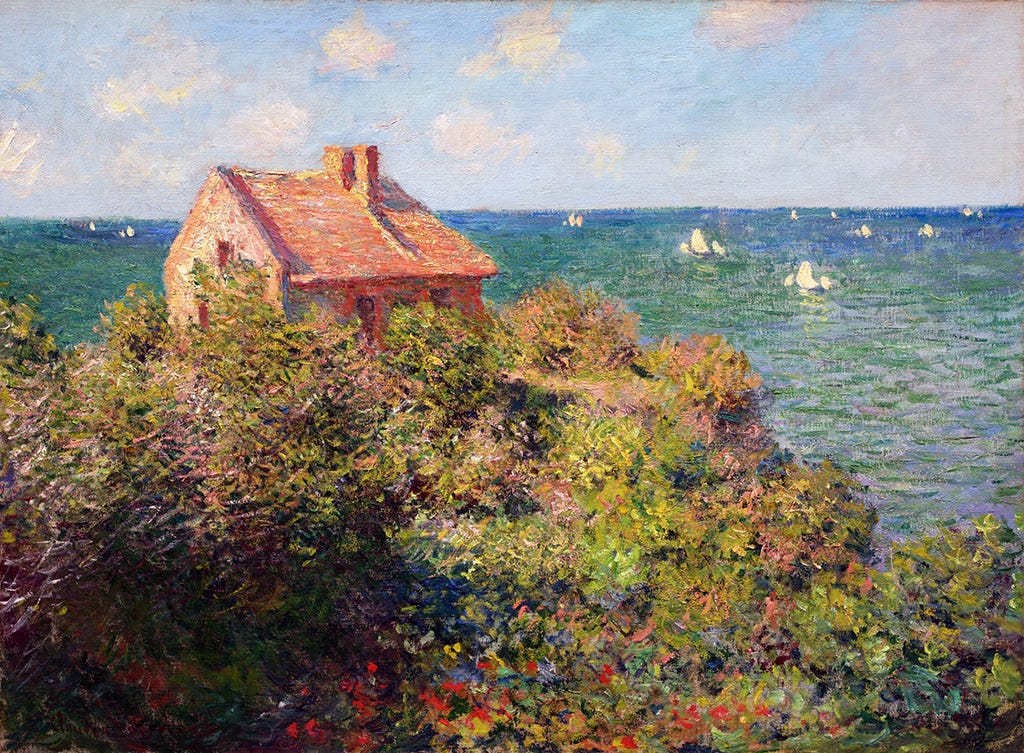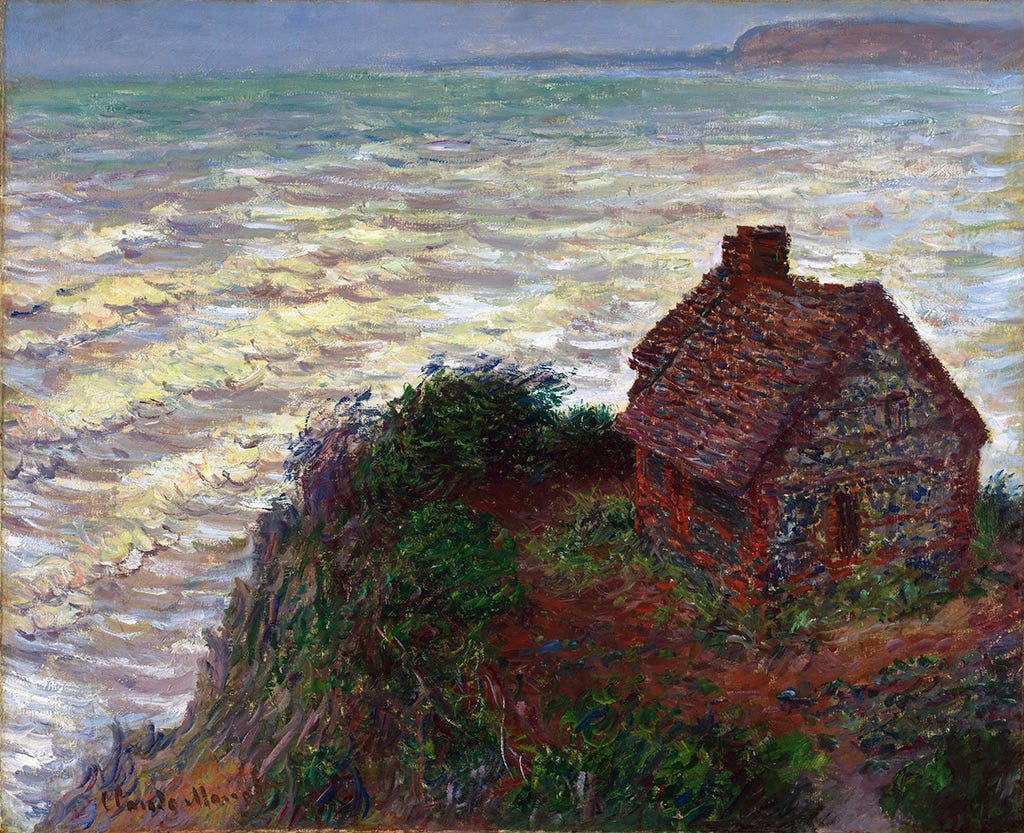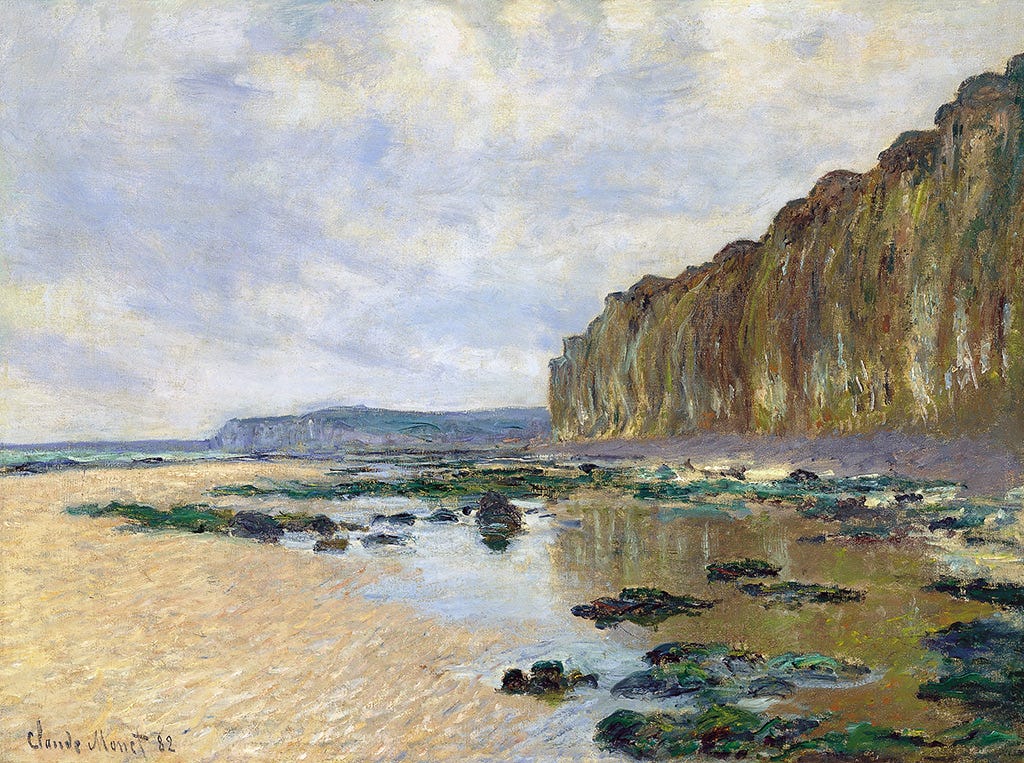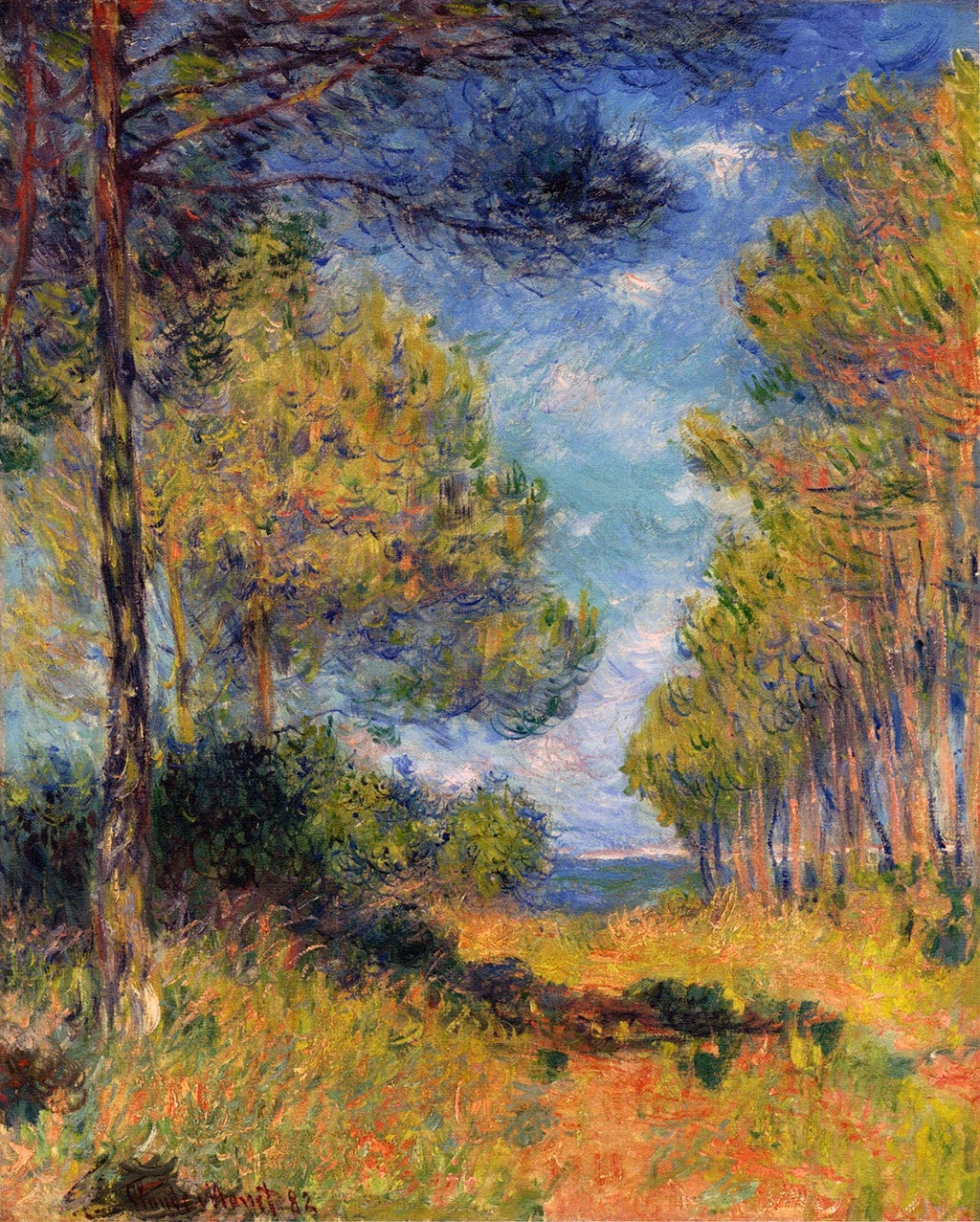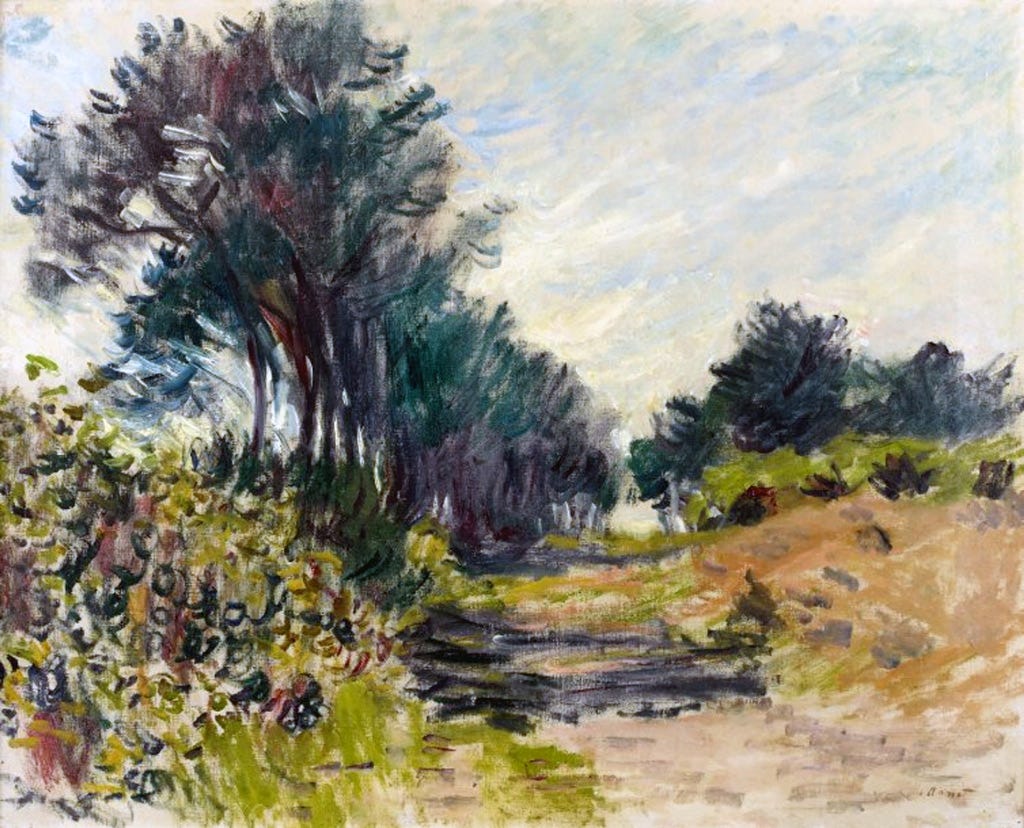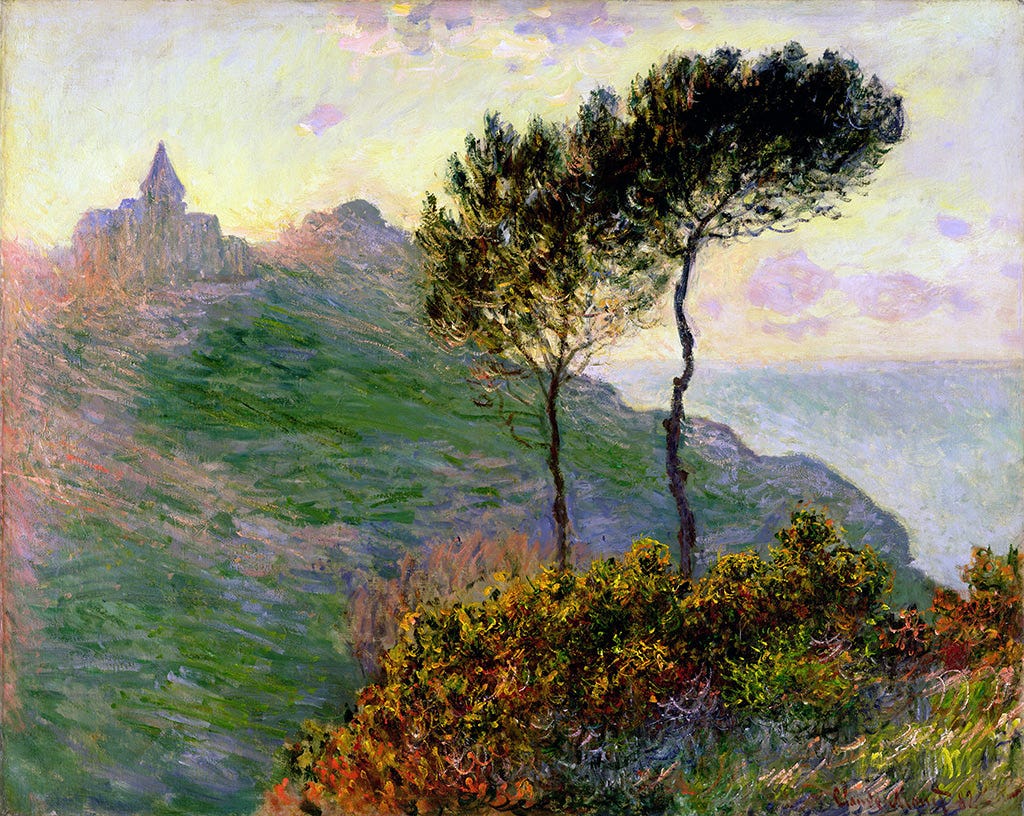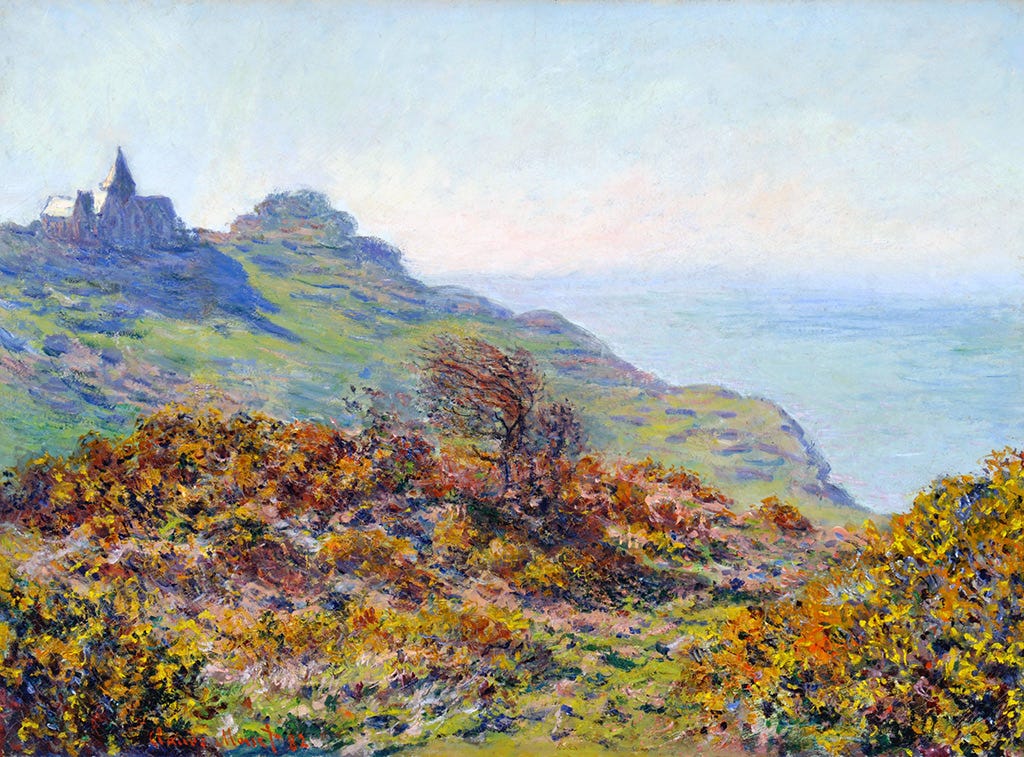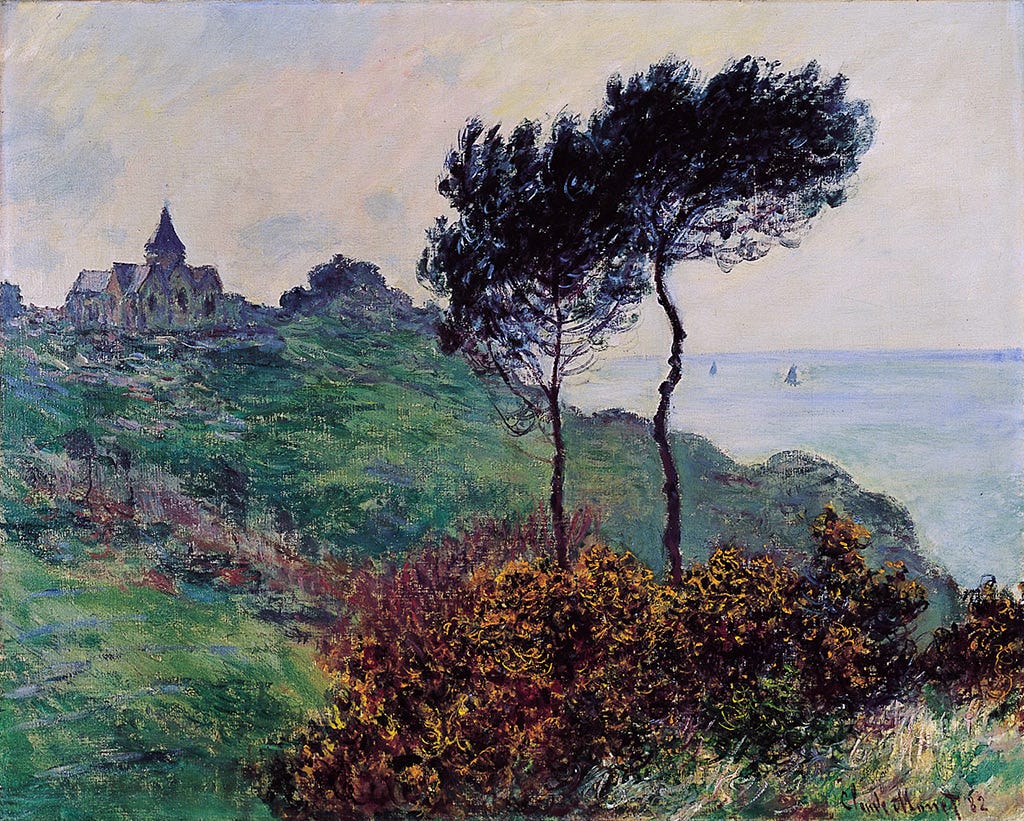NOTE: This is PART 3a (of 3 parts) of Monet’s works in Dieppe. PART 2 deals with the immediate suburb of Dieppe, Pourville-sur-Mer, while PART 3 deals with another suburb, Varengeville-sur-Mer.
Monet painted a lot of paintings in Varengeville, so we had to divided them up in two different articles; 3a and 3b. A link to part 3b will appear here when published. Or you can subscribe to our free newsletter to receive updates and new articles in your mailbox.
Click here to read Part 1, Monet’s works in Dieppe.
Click here to read Part 2 (“a” of 4 subparts) of his works in Pourville
Claude Monet's engagement with the Normandy coast, a source of profound inspiration throughout his career, included a significant period spent in Varengeville-sur-Mer, a picturesque village located west of Dieppe. This area, known for its dramatic cliffs, expansive sea views, and unique quality of light, offered Monet new landscapes and seascapes to explore with his impressionistic techniques. His time in Varengeville-sur-Mer, though less documented than his stays in other locations, was part of his broader exploration of the effects of light and atmosphere on the natural world, a central theme in his work.
Varengeville-sur-Mer, like Pourville, Etretat, and other Normandy locations Monet painted, provided him with the rugged coastal scenery and ever-changing maritime light that were crucial to his impressionistic experiments. The village's position on the Alabaster Coast, with its high cliffs overlooking the English Channel, presented Monet with a different vantage point from which to observe and paint the interaction between land, sea, and sky.
During his visits to Varengeville-sur-Mer, Monet was particularly drawn to the natural elements that characterized the region. He focused on capturing the way light filtered through the atmosphere, changing the appearance of the sea and cliffs at different times of the day and in varying weather conditions. These studies were instrumental in Monet's ongoing quest to depict the transient moments of nature, emphasizing the importance of direct observation and the artist's immediate experience of the landscape.
Monet's work in Varengeville-sur-Mer also reflects his interest in exploring the boundaries of landscape painting. By focusing on the elemental forces of nature and the ephemeral qualities of light and color, Monet pushed the limits of traditional landscape art, moving towards a more abstract and expressive representation of nature. This approach was revolutionary at the time and contributed significantly to the development of modern art.
Although specific paintings from Monet's time in Varengeville-sur-Mer may not be as well-known as those from other periods of his career, his work there is a testament to his lifelong commitment to capturing the essence of the natural world. It underscores his role as a pioneer of the Impressionist movement, which sought to convey the sensory and emotional experience of being in nature, rather than simply depicting its physical appearance.
Monet's exploration of the Normandy coast, including his time in Varengeville-sur-Mer, was crucial in shaping his artistic vision and in influencing the direction of Western art. Through his innovative use of color, light, and brushwork, Monet invited viewers to see the world around them in new ways, emphasizing the beauty and transitory nature of the landscape. His work continues to inspire and captivate audiences, offering a timeless reflection on the relationship between the artist and the natural world.
Varengeville-sur-Mer
The village of Varengeville-sur-Mer (population: 1,000) lies next to Pourville, a bit further East from Dieppe along the coast. It was a popular place for artists.
NOTE: This is PART 3a (of 3 parts) of Monet’s works in Dieppe. PART 2 deals with the immediate suburb of Dieppe, Pourville-sur-Mer, while PART 3 deals with another suburb, Varengeville-sur-Mer.
Monet painted a lot of paintings in Varengeville, so we had to divided them up in two different articles; 3a and 3b. A link to part 3b will appear here when published. Or you can subscribe to our free newsletter to receive updates and new articles in your mailbox.
Click here to read Part 1, Monet’s works in Dieppe.
Click here to read Part 2 (“a” of 4 subparts) of his works in Pourville

